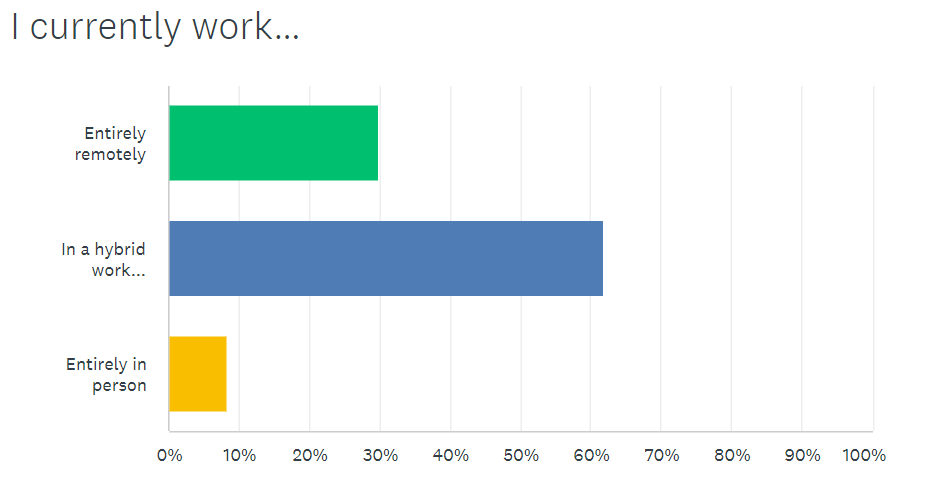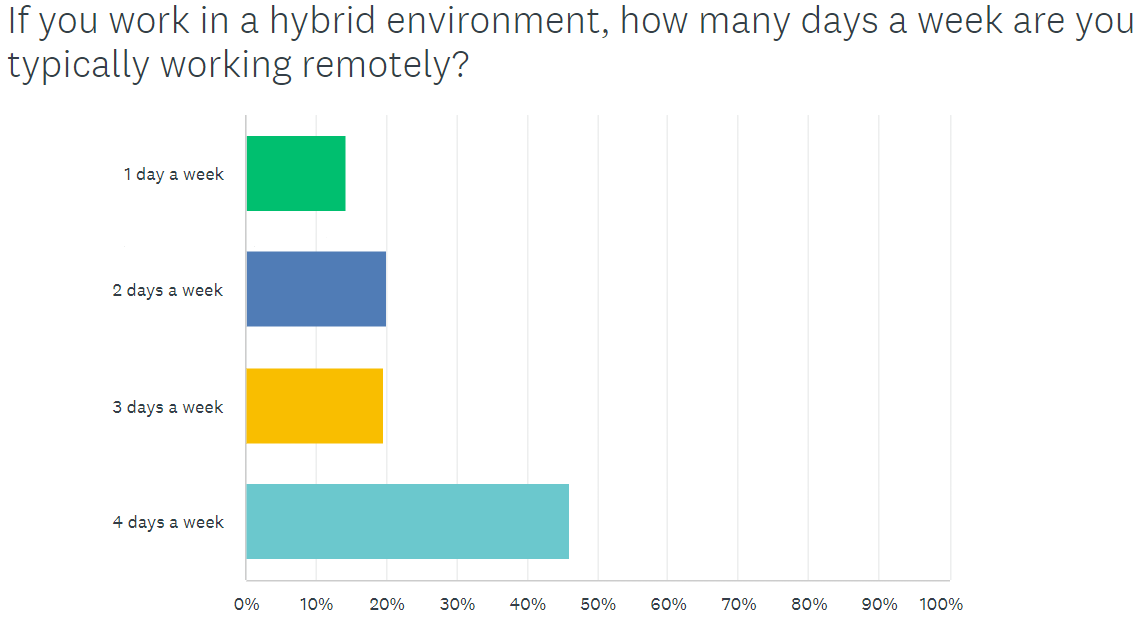Dissatisfied with OPM’s data, Republicans ask individual agencies for telework details
With many agencies’ return-to-office plans still uncertain, Republicans on the House Oversight and Accountability Committee want to take matters into their own hands.
GOP committee leaders changed their strategy for trying to get more federal telework data, now reaching out directly to agency heads. In a series of 25 letters, the lawmakers asked for up-to-date numbers of teleworking federal employees, after saying the Biden administration was “not adequately tracking the specific levels of telework.”
The Biden administration “has not provided current data about the specific amount of telework occurring within federal agencies or across the entire federal workforce. Furthermore, it has provided no objective evidence concerning the impact of elevated telework on agency performance — including any deleterious impacts,” lawmakers said in the letters, published May 18.
The push for more data comes in a long line of frustrations from GOP lawmakers over federal telework. Earlier this year, Republican-led legislation called the SHOW UP Act urged the return of federal employees to pre-pandemic telework levels. The bill cleared the House in February, along party lines. Senate Republicans introduced companion legislation last week.
Republicans have said increased telework during and after the COVID-19 pandemic caused delays and backlogs in agencies’ public-facing services. But Democrats, advocacy groups and federal unions have said those challenges are largely due to understaffing and underfunding, and emphasized that telework remains a critical tool for federal recruitment and retention.
In preparation for the planned end of the national public health emergency, the Biden administration pushed agencies to start increasing “meaningful” in-person work. The Office of Management and Budget, in an April memo to agency leaders, told agencies to measure productivity and strike a balance between adding in-person work where necessary, particularly at agency headquarters, while still maintaining telework flexibilities.
But even with the administration’s call to increase in-office work, Republicans maintained that the Biden administration’s memo did not go far enough.
“Even though the pandemic is over, the Biden administration is allowing telework levels far above those that existed pre-pandemic. This is occurring in an apparently indiscriminate, unaccountable manner, without oversight from the White House or the Office of Personnel Management,” Committee Chairman James Comer (R-Ky.) said in a press statement. “Federal workers must show up to work in-person and the Oversight Committee will hold agencies accountable when their employees do not show up to work for the American people.”
OMB declined to comment on the Oversight Committee’s letters to agencies.
What telework data is out there?
For more than a decade, OPM has collected telework data annually from federal agencies. Each year, OPM asks agencies to share how many employees are teleworking, how their telework program operates and the outcomes of implementing it. The information eventually goes into an annual report to Congress from OPM.
The most recent report publicly available, published in December 2022, covers telework data from fiscal 2021. In the report, OPM said 47% of the federal workforce overall teleworked during that year.
The report, a requirement under the Telework Enhancement Act of 2010, includes annual data that agencies submit to OPM on telework eligibility, participation and frequency, as well as their goal setting, cost savings and management efforts to promote telework and promising practices. The 2021 telework data call went to 91 agencies and OPM received responses from 84 of them.
There are some gaps in the report data, though — for instance, some agencies did not, or could not, provide details to OPM on their exact numbers of teleworking employees.
“Agencies that did not have values for employee population, eligibility, participation or frequency were asked to provide this information,” OPM said in the report. “In most cases, they were able to do so, but a few agencies were unable to provide information due to the classified nature of their work or because accurate records were not available.”
Getting a completely accurate portrait of telework is also complicated by the variability in how many days each week federal employees report to the office. Even one individual may go into the office a different number of days each week, depending on the week.
Federal News Network, in a survey of about 4,700 federal employees, found that in May, about 30% of feds were working entirely remotely, 62% were working in a hybrid environment and 8% were working entirely in person. For employees working on a hybrid schedule, most were working remotely four out of five days a week.


More details on federal telework are on the horizon, too. The 2022 Consolidated Appropriations Act, passed last March, required OPM to additionally include “telework successes, best practices and lessons learned during the COVID-19 pandemic, as well as recommendations and guidance for remote work post-pandemic, within its annual telework report.”
But due to the timeline, OPM said the information was not included in the fiscal 2021 report, but that the agency plans to include it in the fiscal 2022 report, which will be published later this calendar year. OPM plans to ask agencies for details on lessons learned and best practices for employee re-entry into the workplace, as well as analysis of telework and remote work’s impact on productivity and performance.
The Federal Employee Viewpoint Survey (FEVS), which OPM administers to individual federal employees, also details teleworking figures. The survey typically receives a response rate around 35%. For the 2022 FEVS, 42% of federal employees said they teleworked between one and three days per week. About 14% were working remotely.
But in the letters to agency heads, Republican committee members said OPM’s report data, outdated by the time OPM publishes it, and the self-reported nature of the information from FEVS, does not provide enough clarity or a real-time picture of telework at agencies.
The Oversight Committee’s letters build on a March hearing about OPM’s programs and operations, which partly focused on questions around telework data.
“The OPM director failed to provide up-to-date information on federal agency telework at the committee’s hearing in March, and an OMB workforce policy memo issued last month failed to ask agencies for the data,” an Oversight Committee spokesperson said in an email to Federal News Network. “That means the Oversight Committee needs to do the asking, so the American people can see what is going on with the federal workforce that ultimately reports to them.”
What’s next for federal telework?
More telework changes are still trickling in after OPM removed the COVID-19 operating status on May 15, as part of the Biden administration’s planned end to the national public health emergency. Agencies’ initial work environment plans, an ask from OMB in its memo, were due last week. OMB is still in the process of reviewing agencies’ submissions.
Some agencies have already started announcing changes to their telework policies, with plans to increase in-person work in the coming months. The Department of Veterans Affairs, for one, announced an upcoming increase in its in-person requirements. Starting this fall, telework-eligible VA employees will have to come into the office five days, or half of the time, per pay period.
OPM has also said it is planning to collect more data from agencies about telework and remote work programs. OPM plans to soon add new requirements for agencies’ reporting of participation in telework and remote work.
“These new data elements will provide deeper and improved granularity into understanding the workforce characteristics,” OPM Director Kiran Ahuja said in a March 7 memo. “Once implemented, they have the potential to improve governmentwide reporting of federal employee participation in remote work, telework and mobile work, as well as allow OPM to evaluate trends and determine how such work arrangements might advance the accomplishment of mission-critical requirements and organizational effectiveness.”
So far, OPM does not have a set implementation date for these plans.
Beyond OPM’s data collection, keycard data can offer another view into how often employees go to the office. Kastle Systems, a building security company, publishes weekly data on the number of employees nationwide who are using keycards to swipe into buildings. As of May 22, the average office occupancy of the top 10 U.S. cities was 49.5%.
But for the federal government, keycards do not provide a wholly accurate portrait. Not all government buildings use keycards for access, and some may operate through different security companies. Many agencies, for instance, instead use Personal Identity Verification (PIV) cards.
GOP lawmakers said they want up-to-date details from individual agencies on how many employees are telework-eligible, how many of those employees are currently teleworking and how many days each employee teleworks in a week, as well as the occupancy rates of federal government offices in the Washington, D.C. area. The committee members also brought up questions around locality pay, federal office holdings, cybersecurity, collective bargaining agreements and the use of annual and sick leave, as they relate to the role of telework for federal employees.
The Oversight Committee gave agencies until June 1 to respond to the questions.
